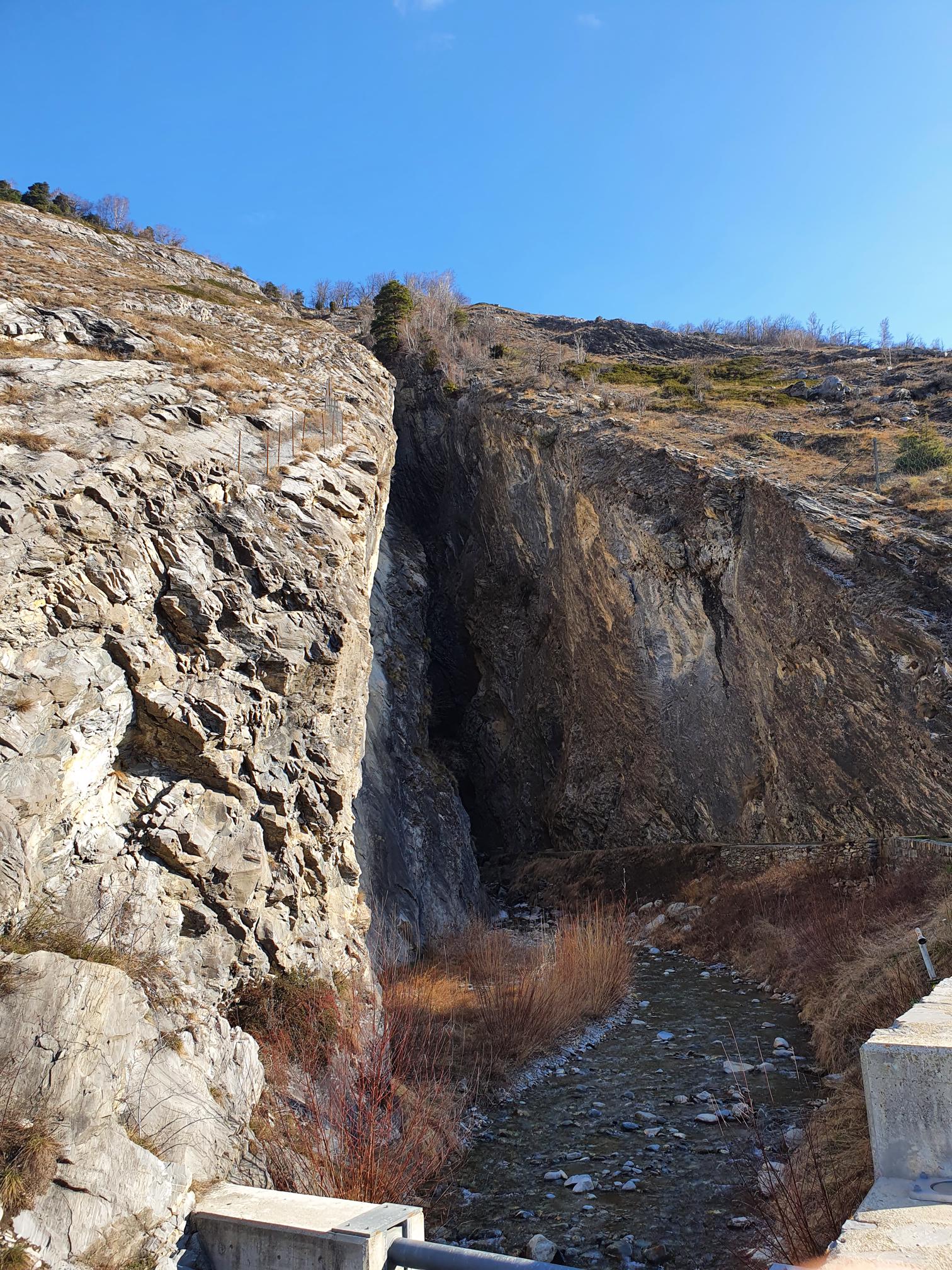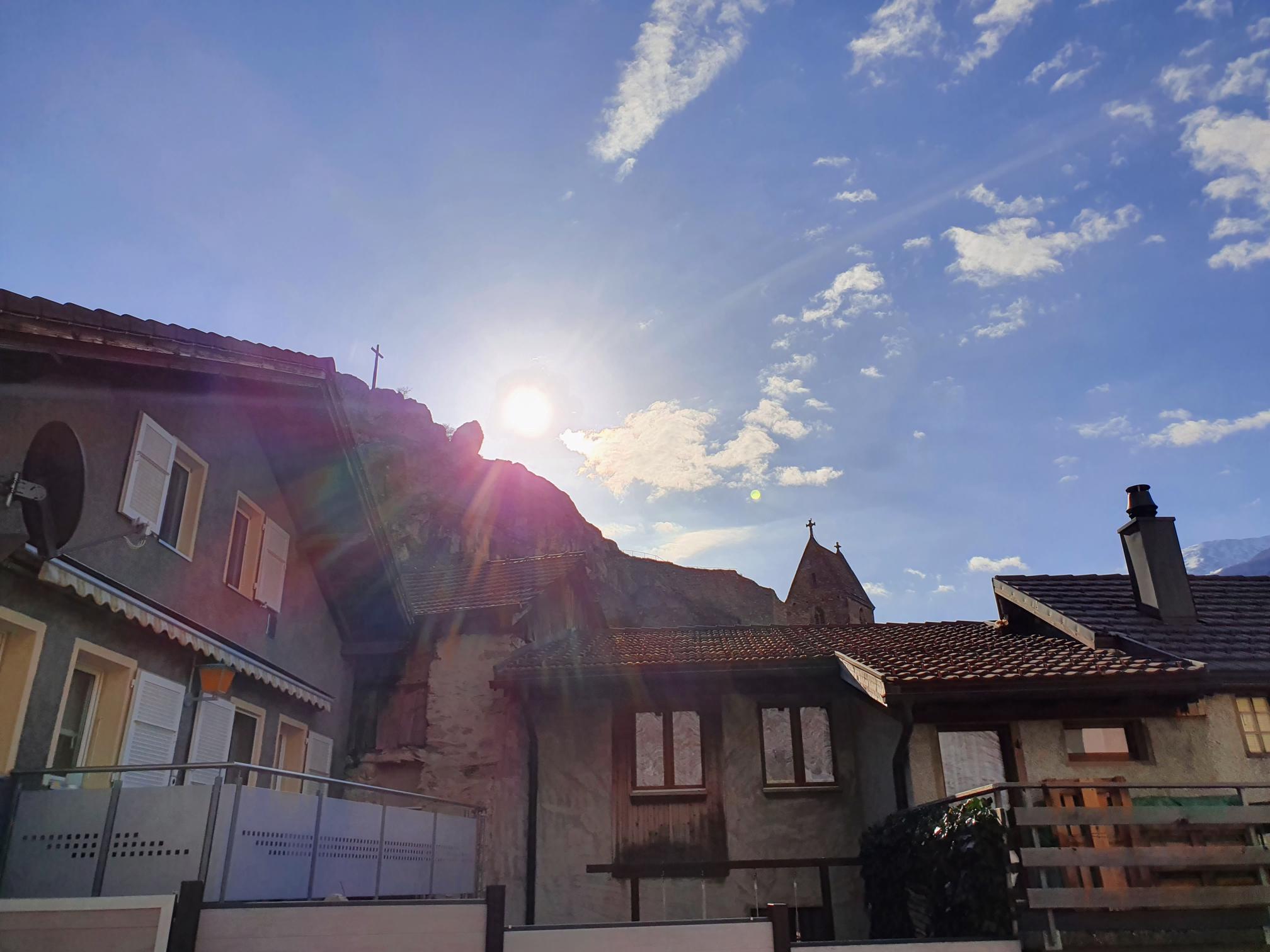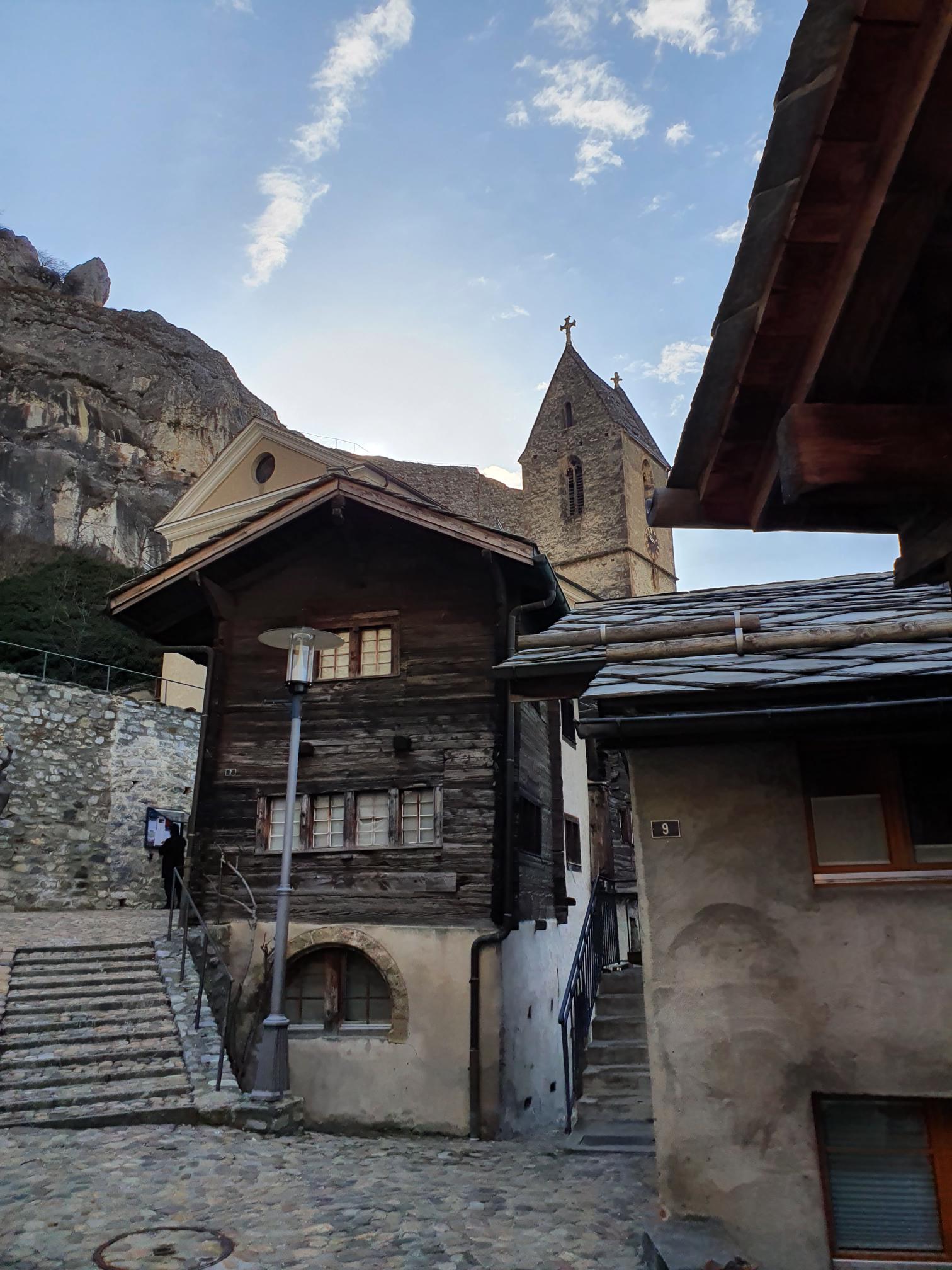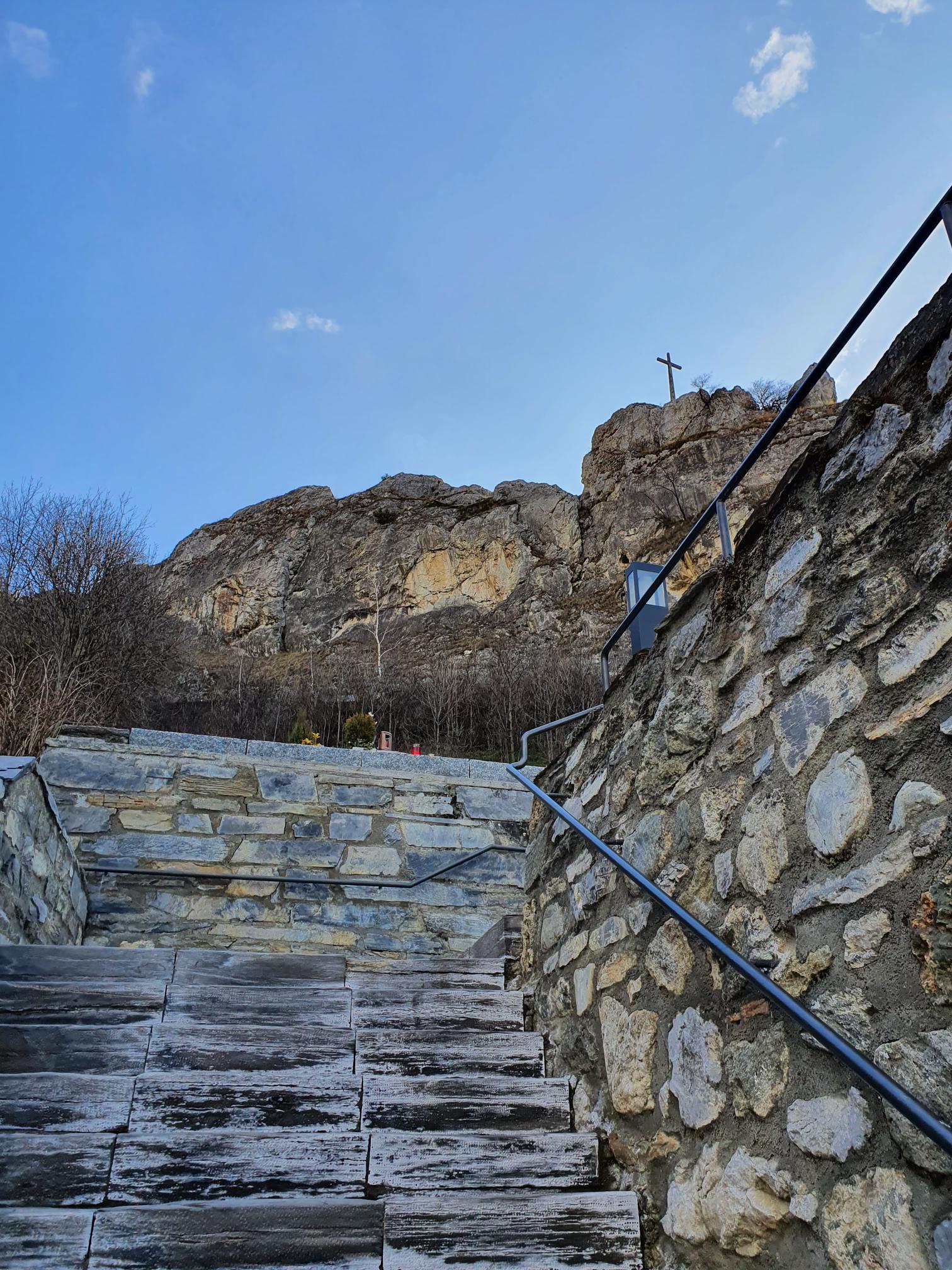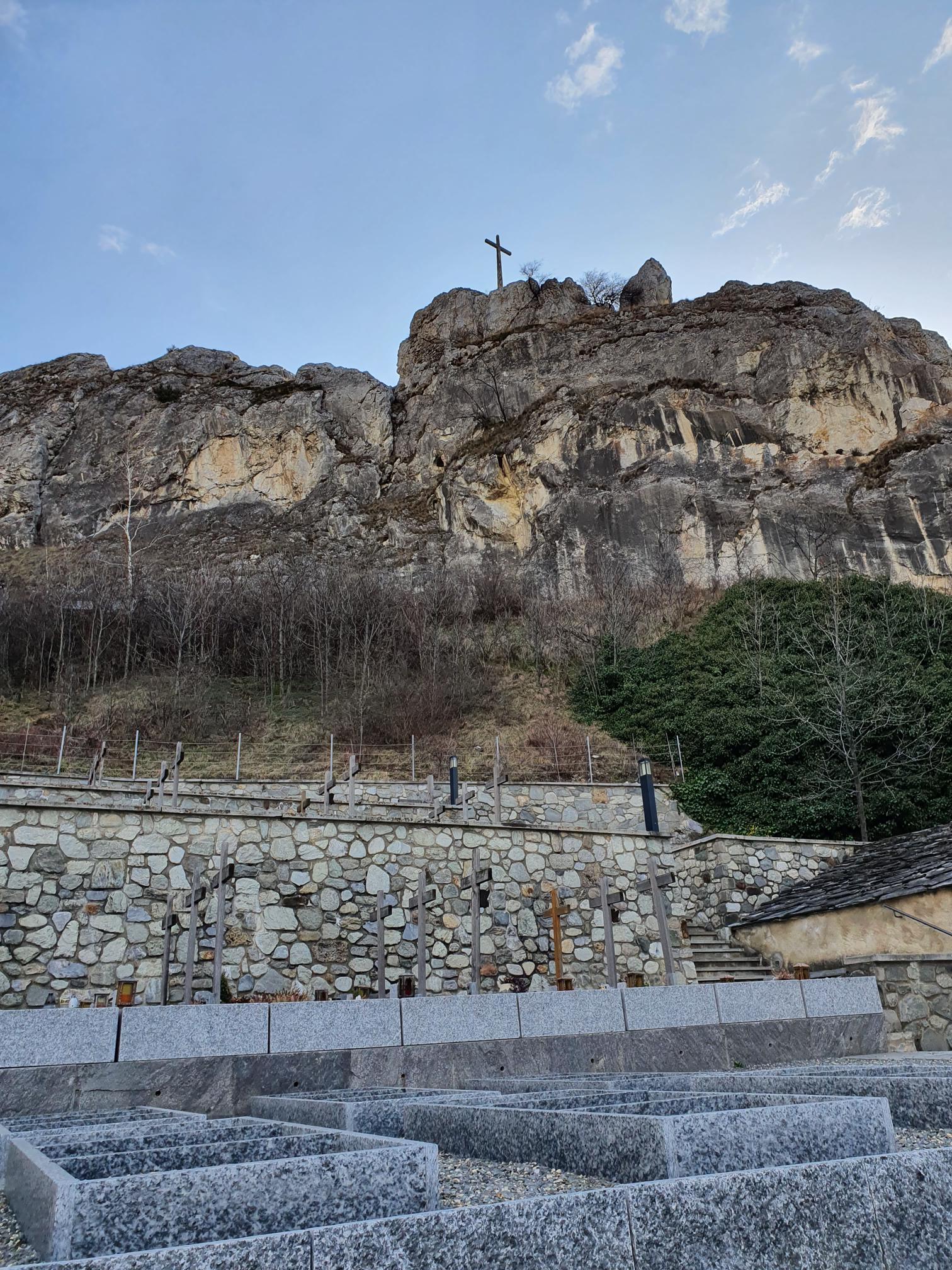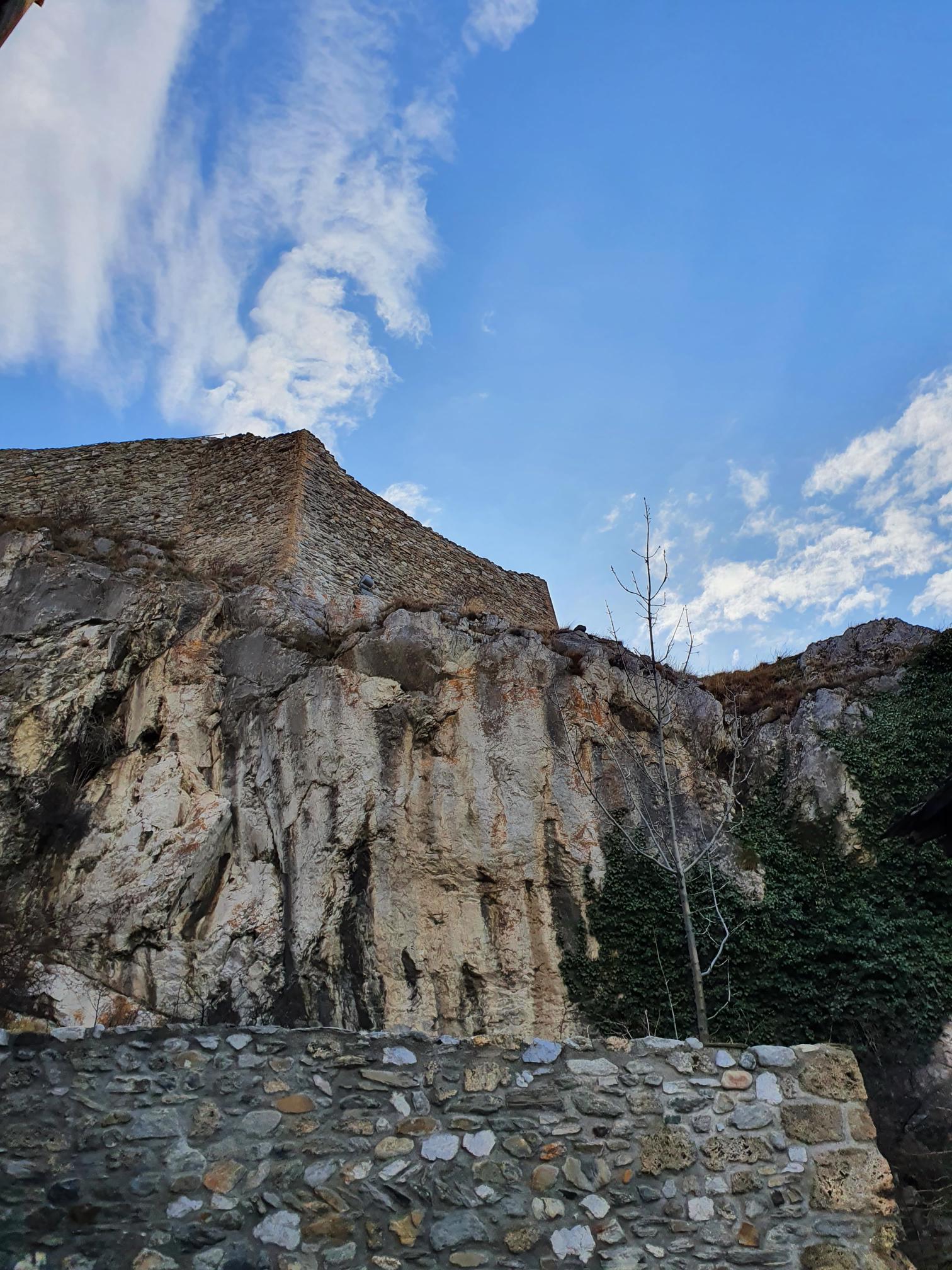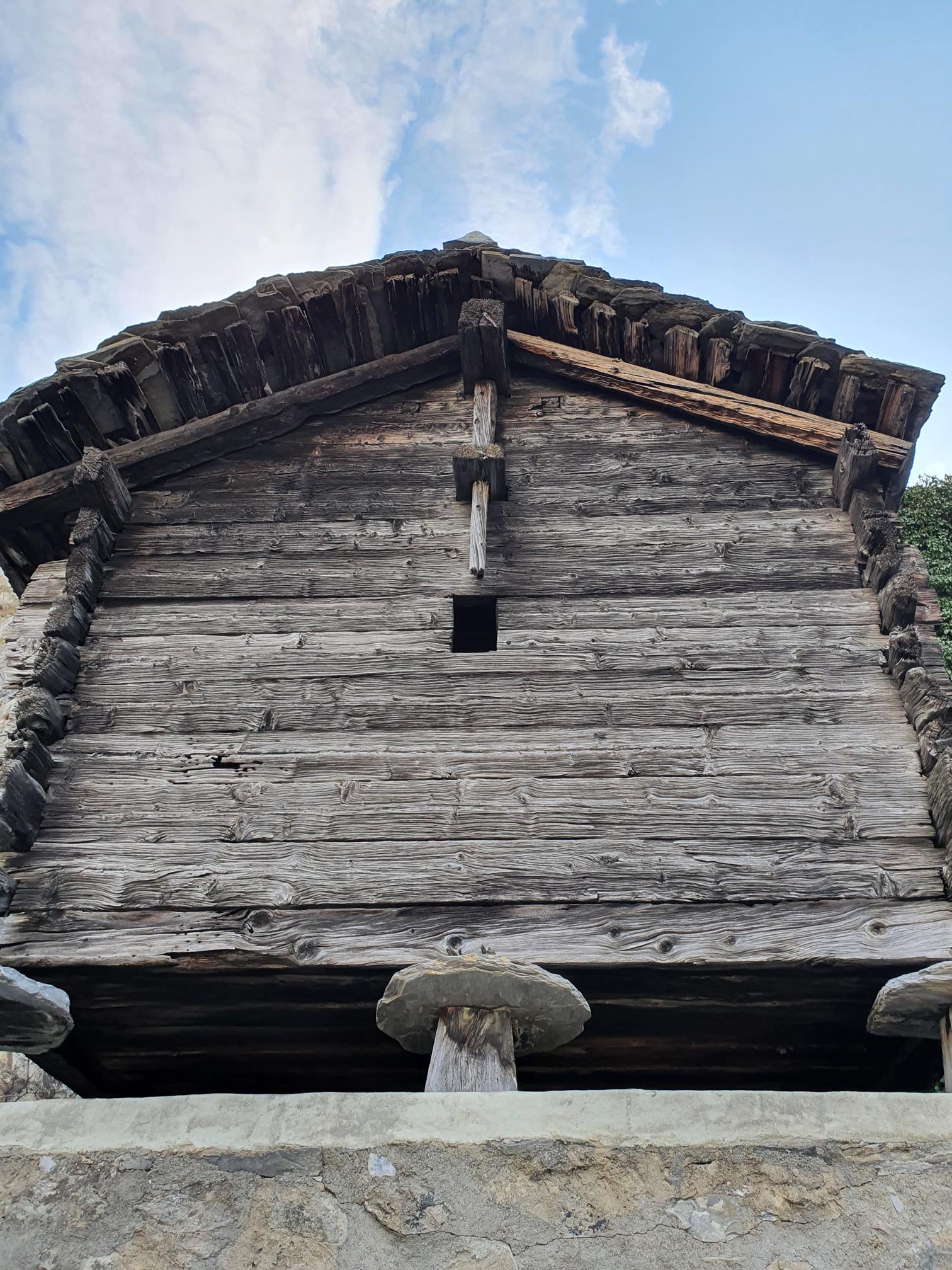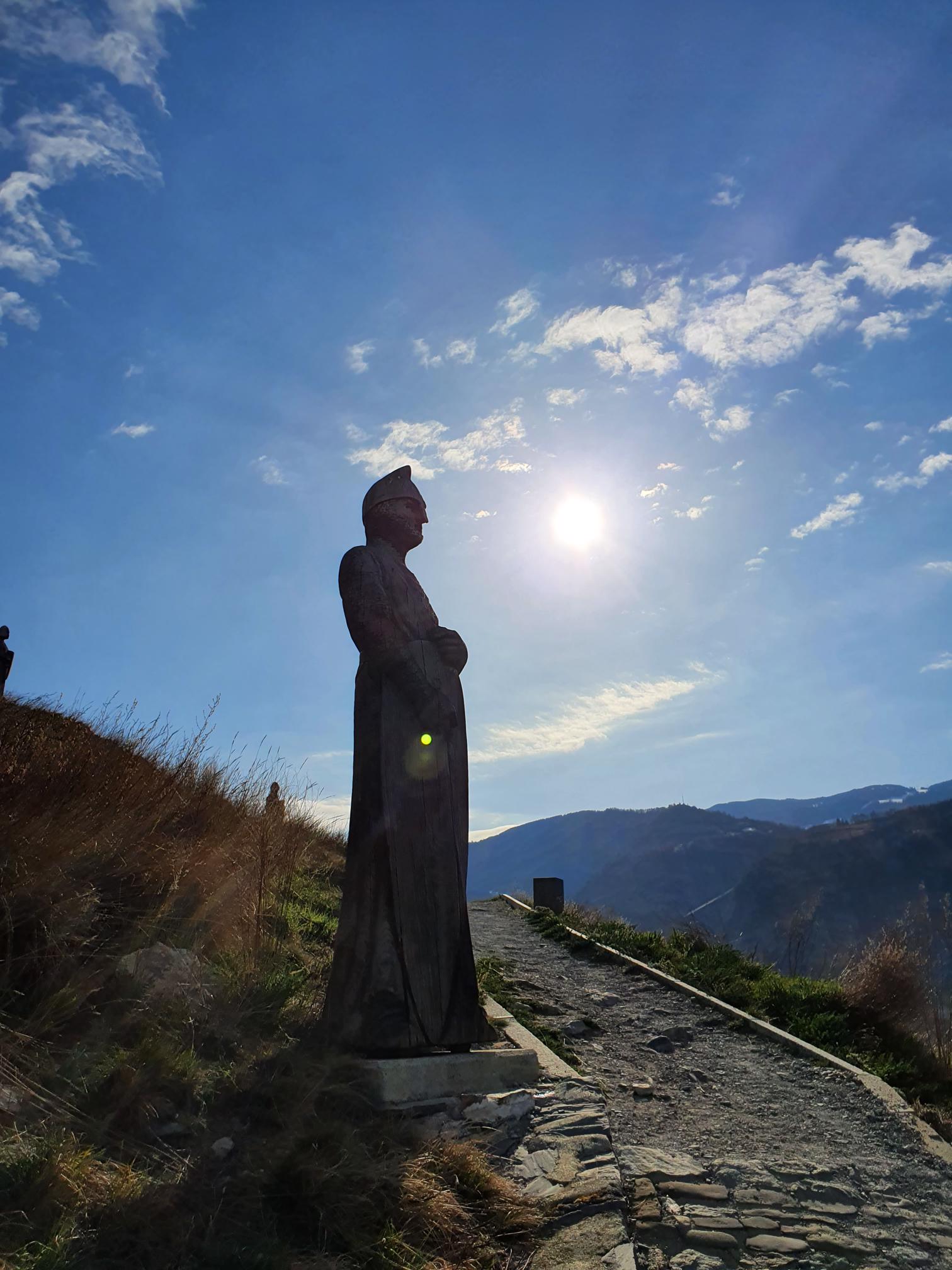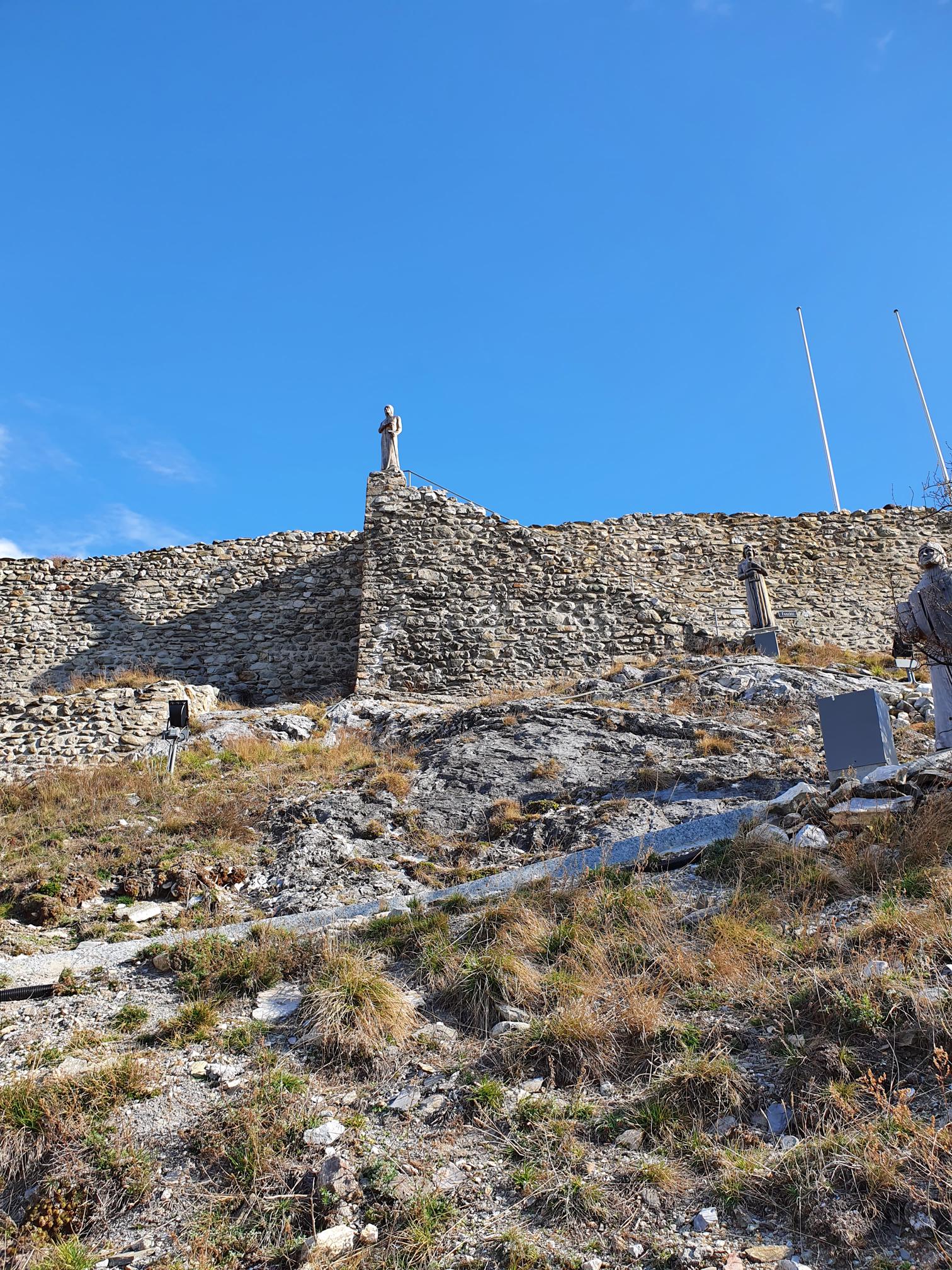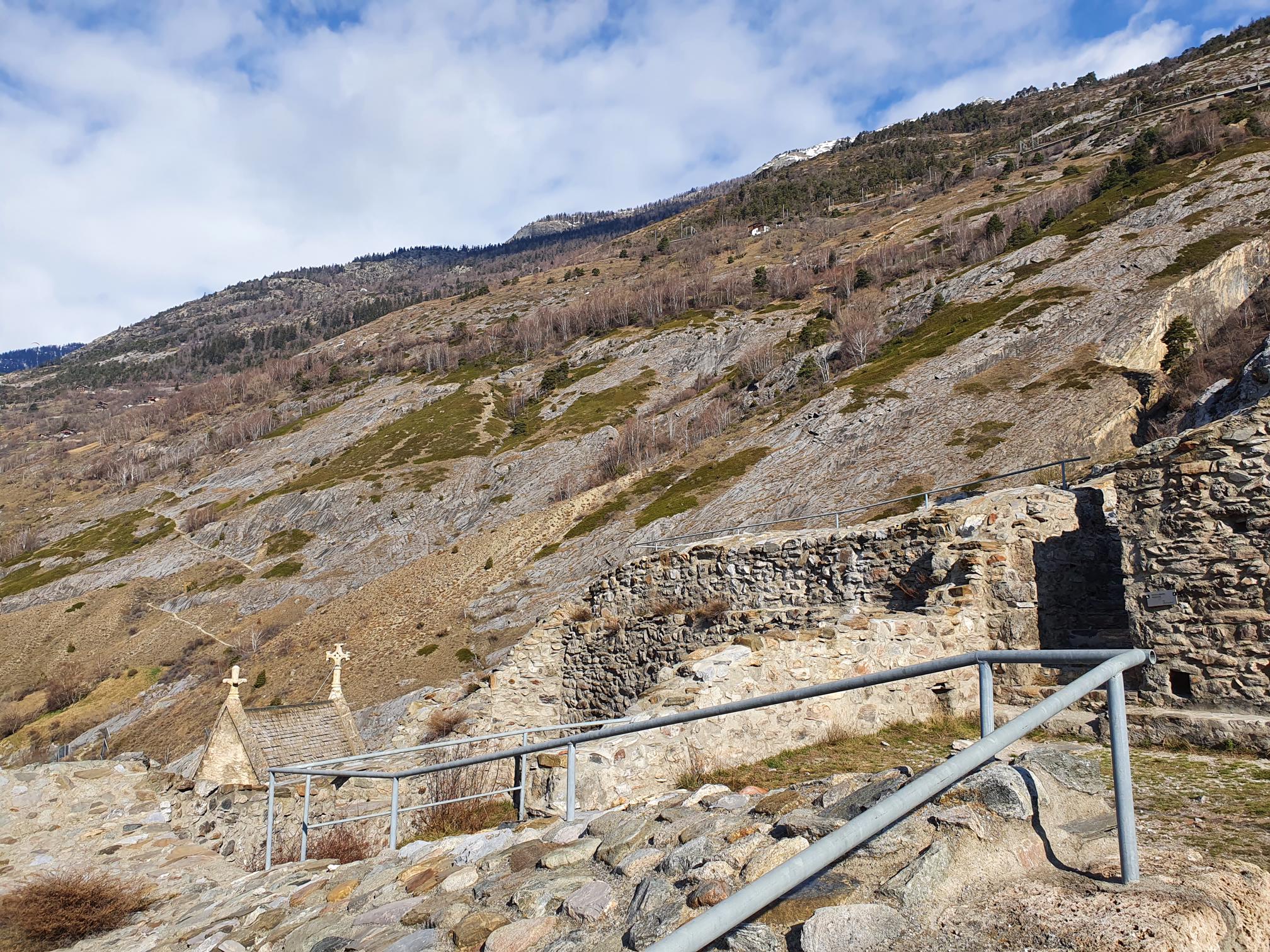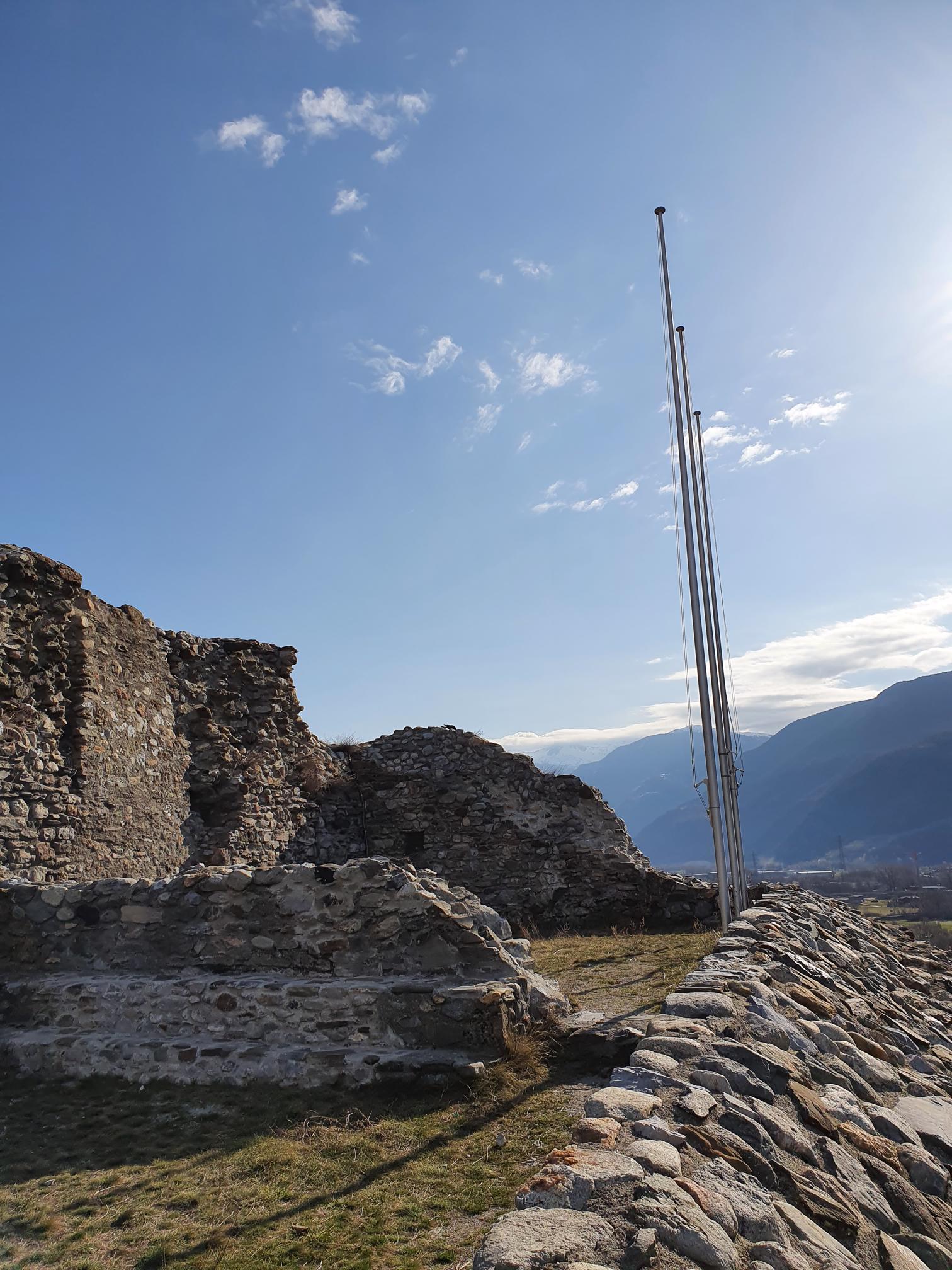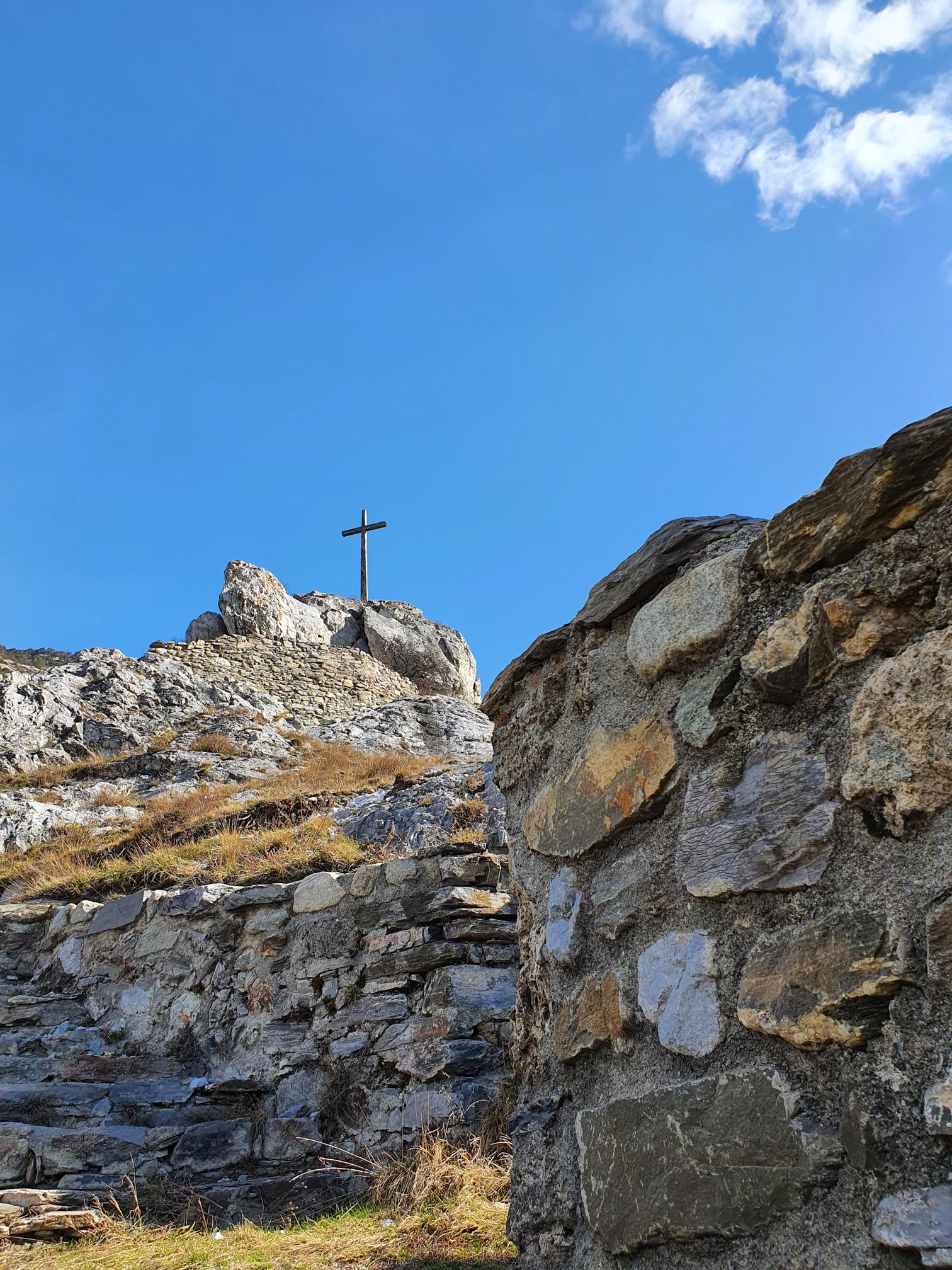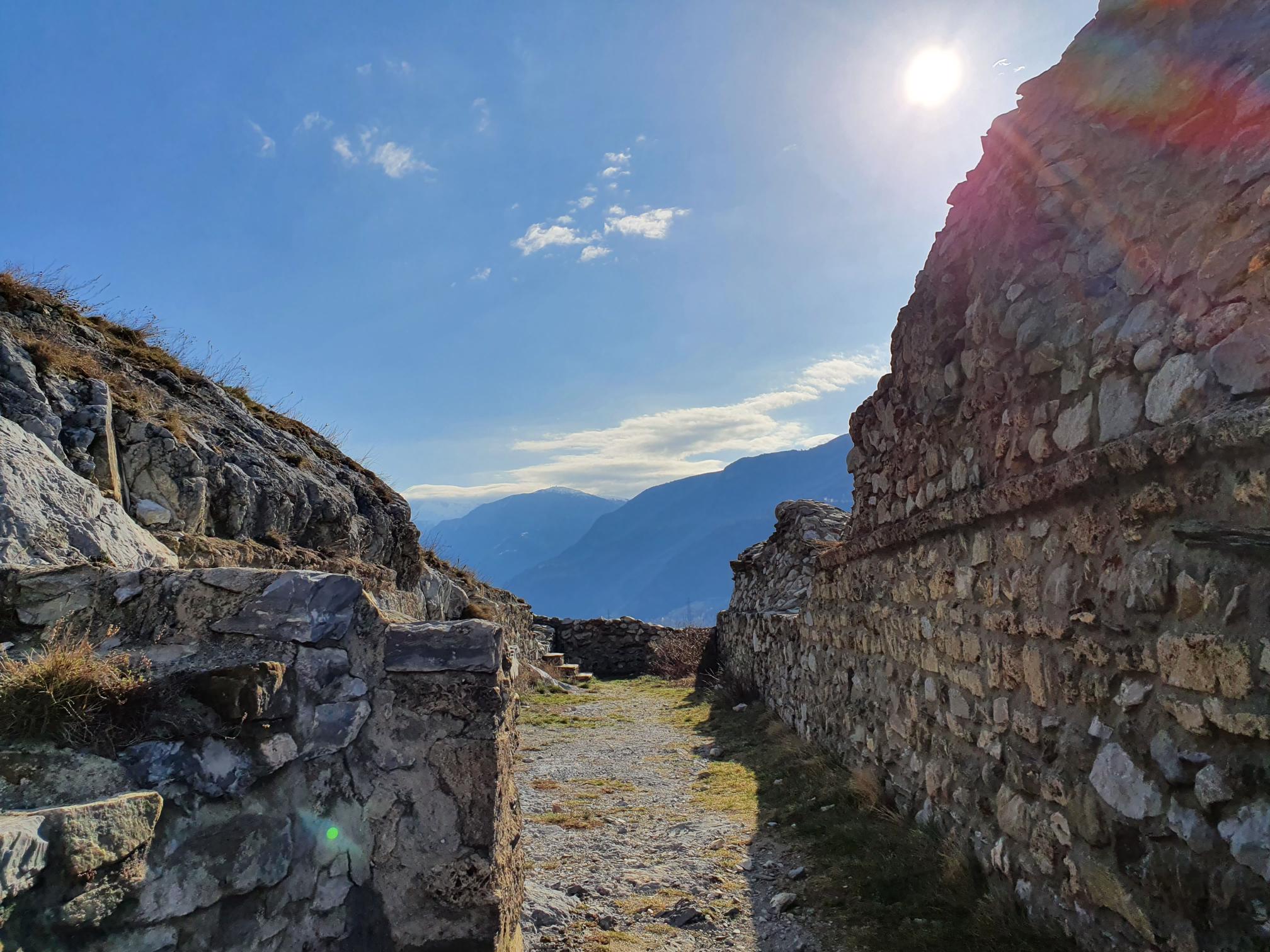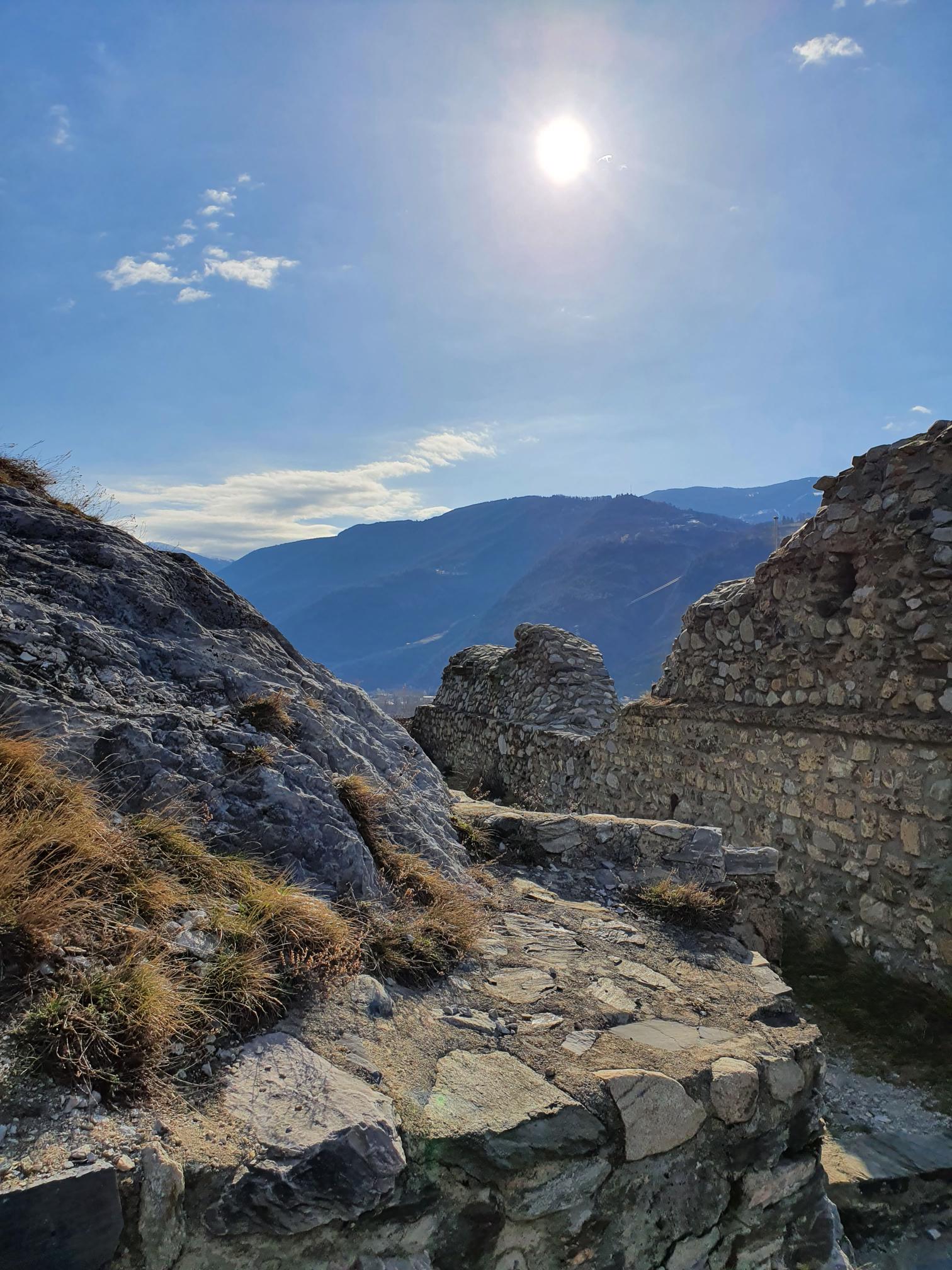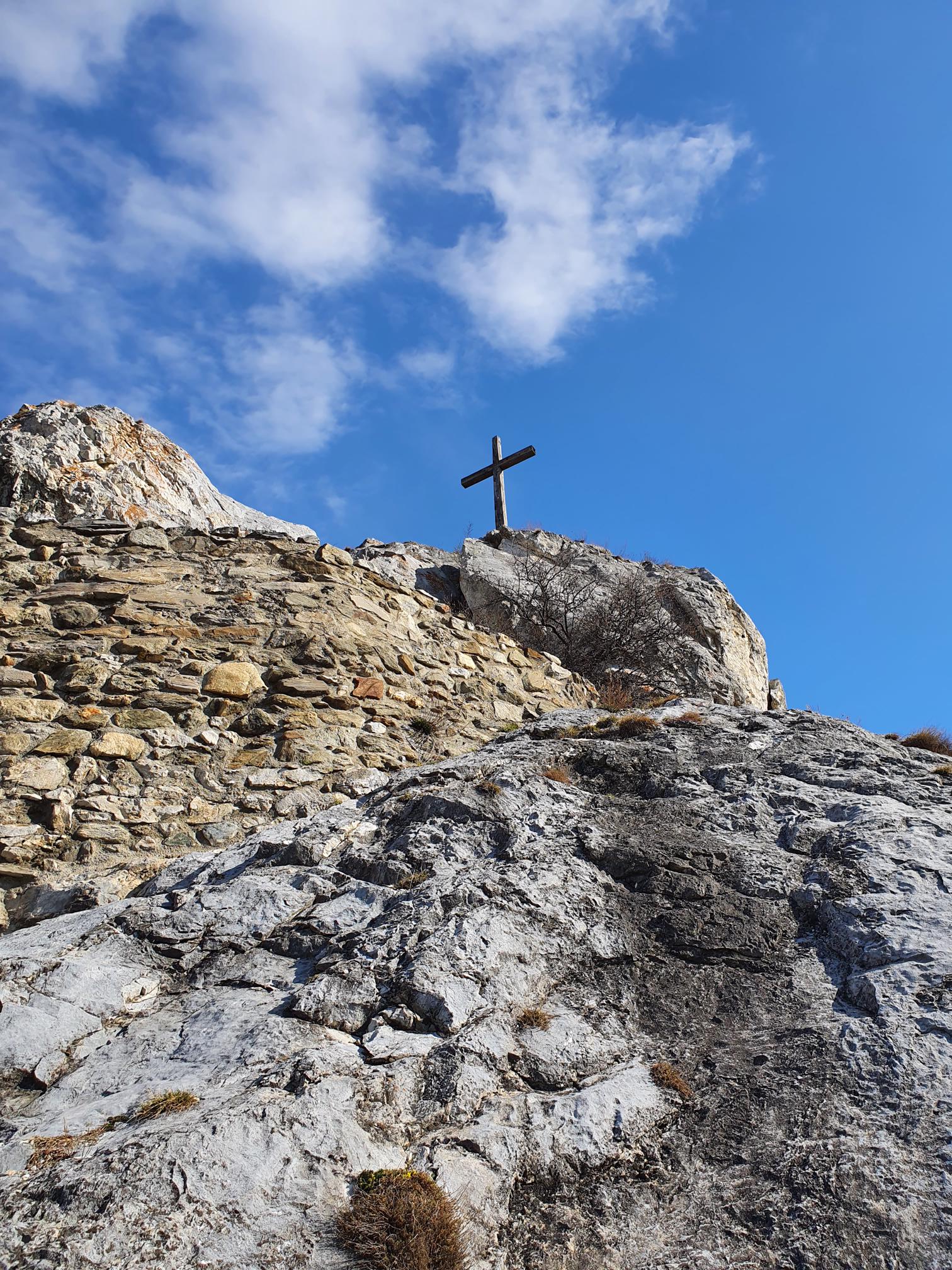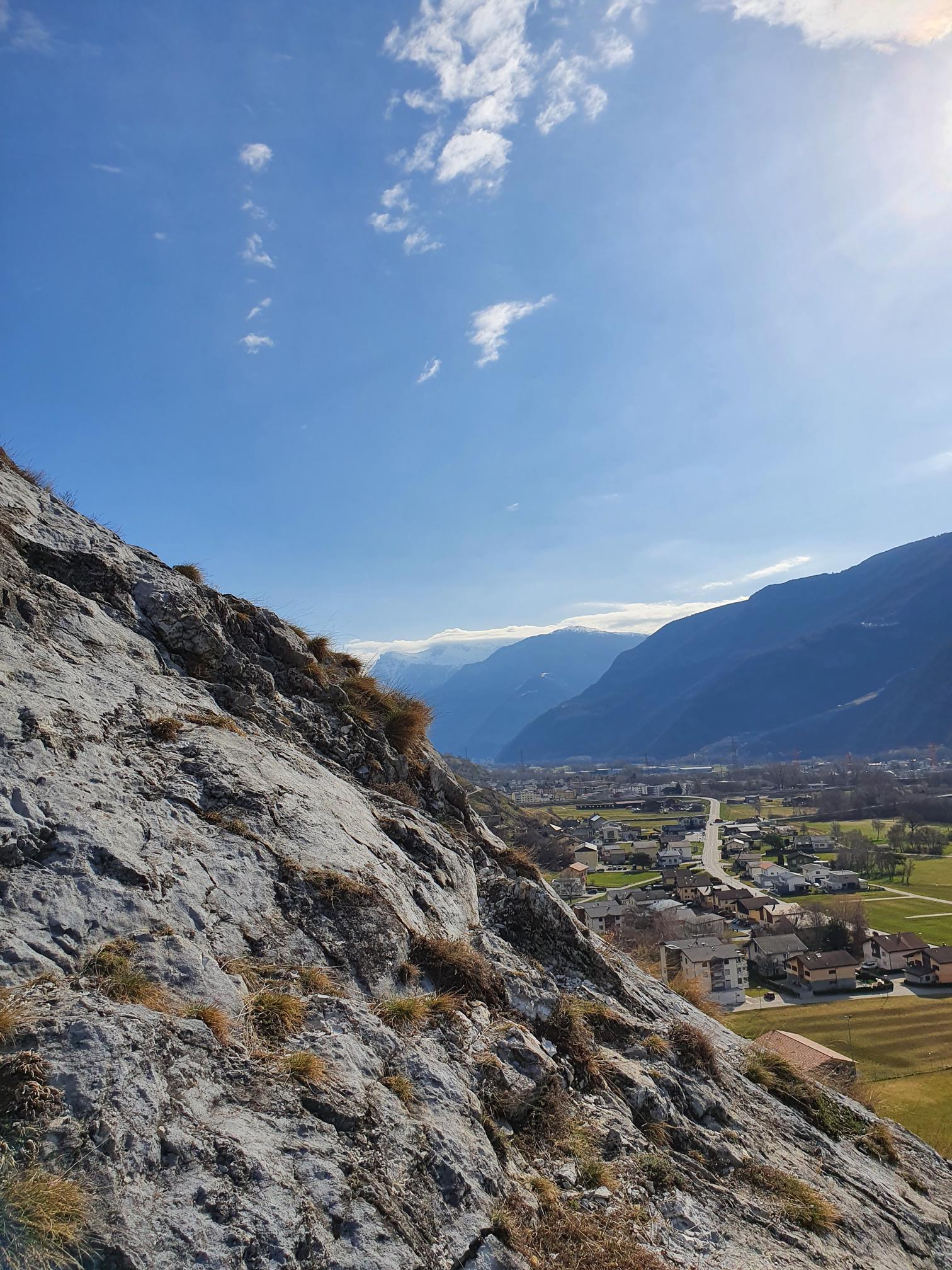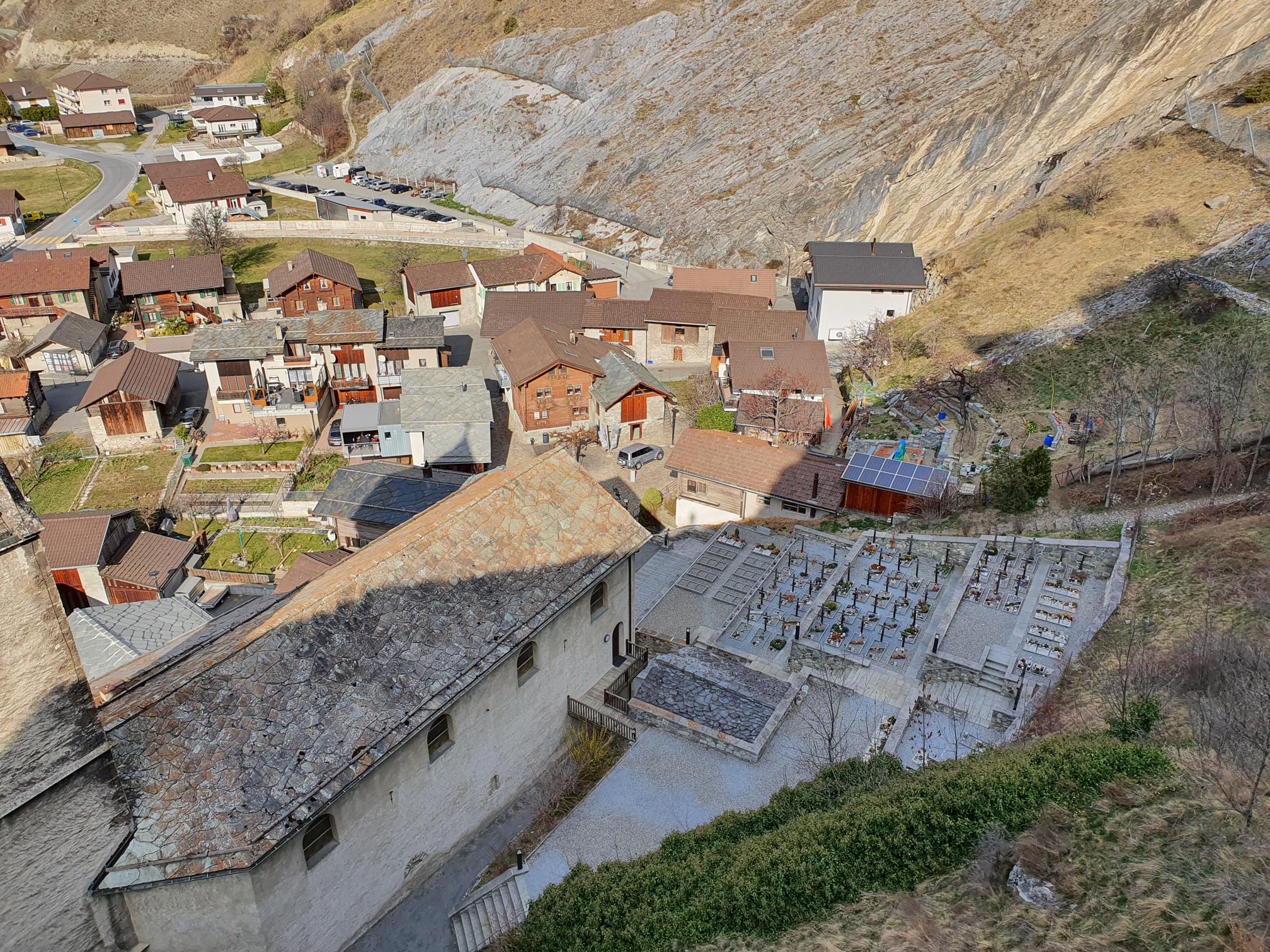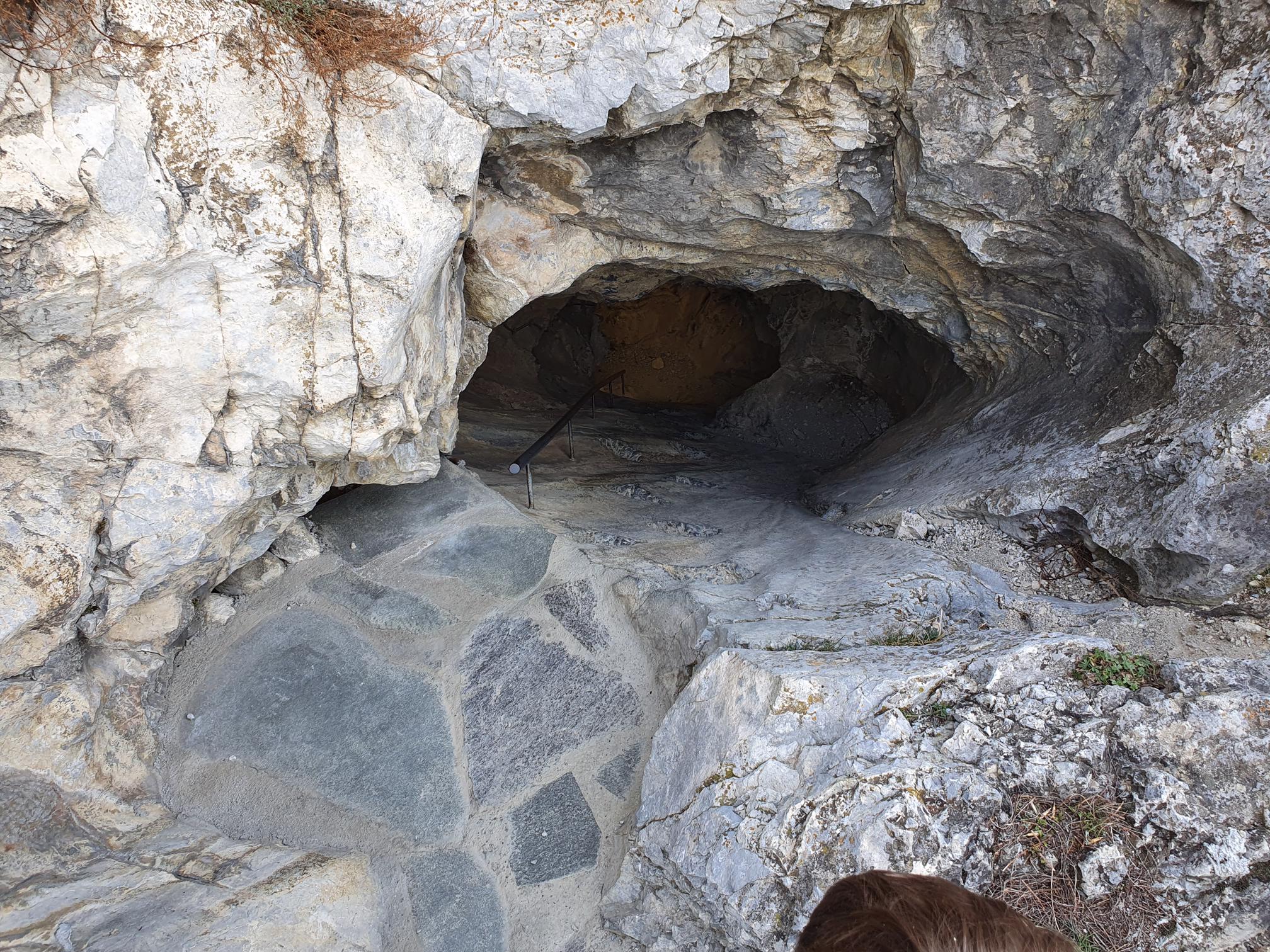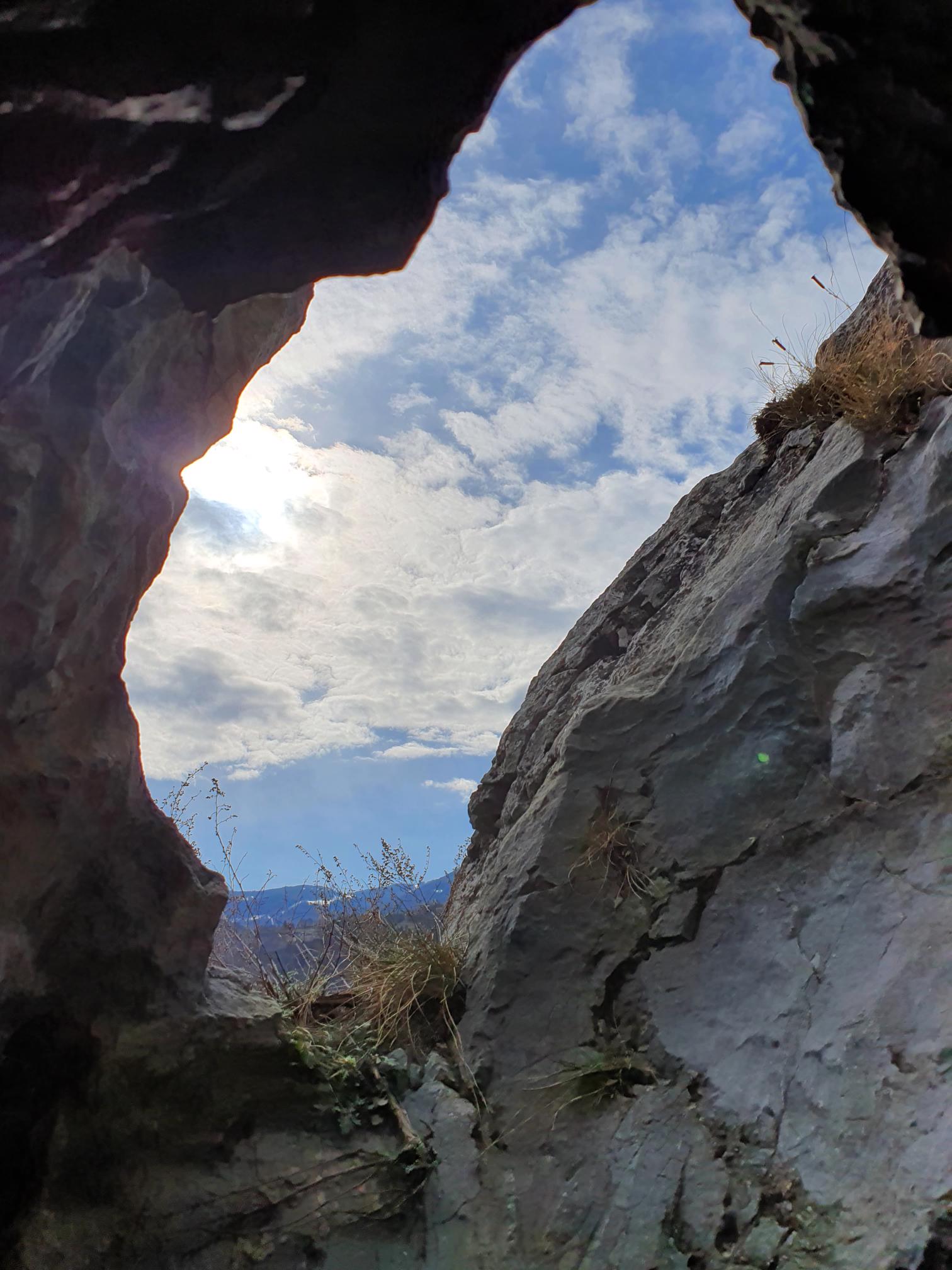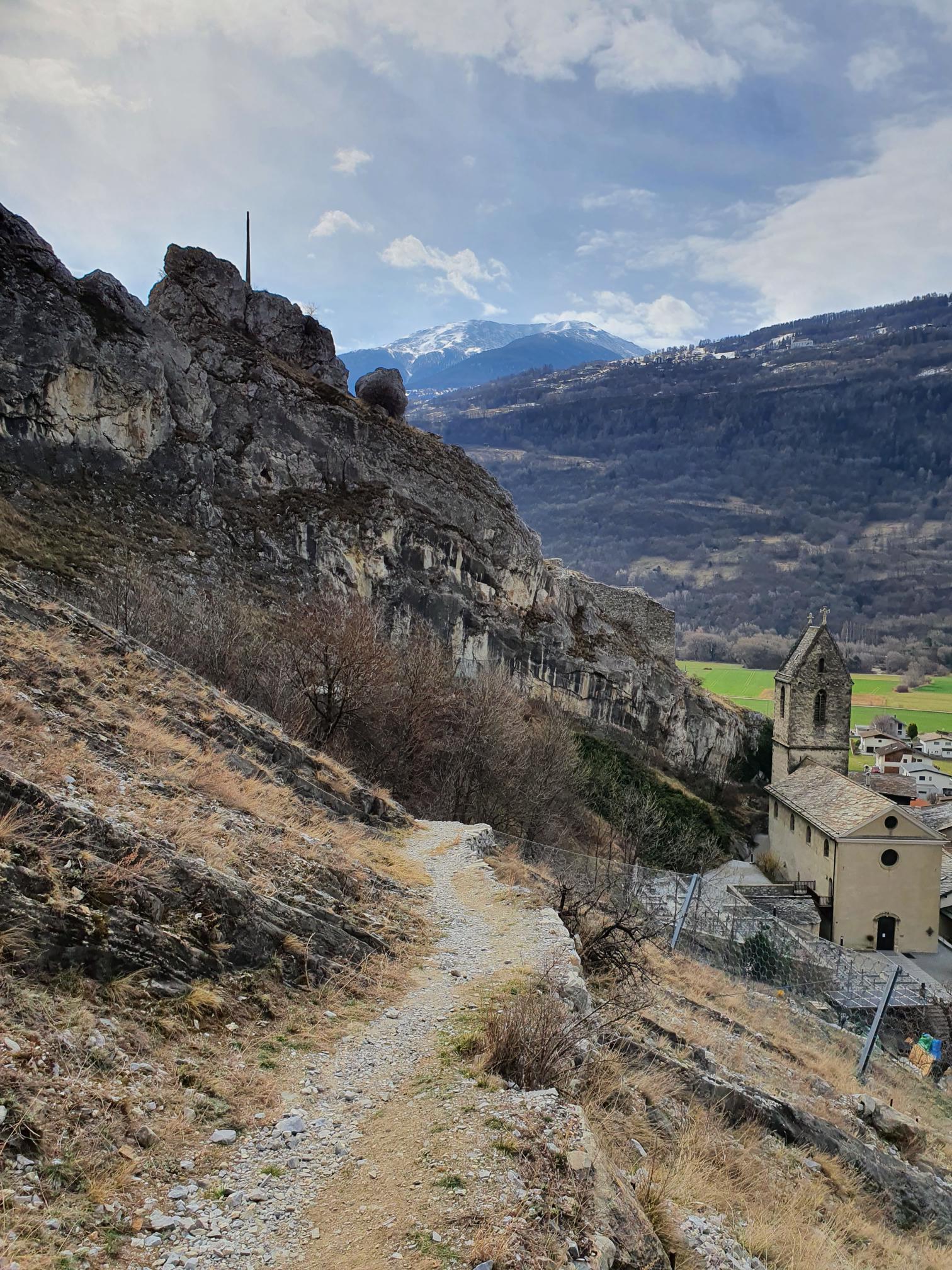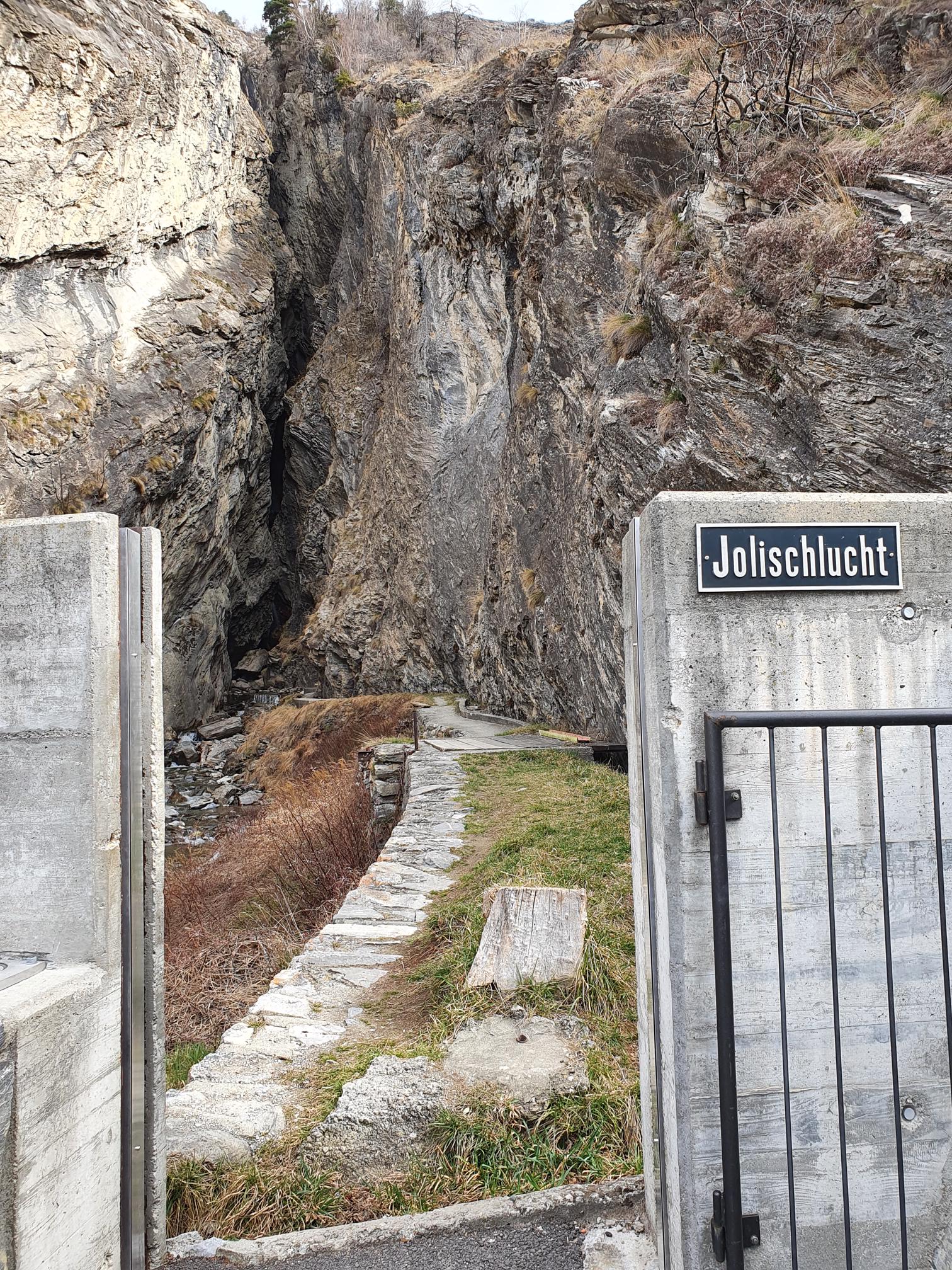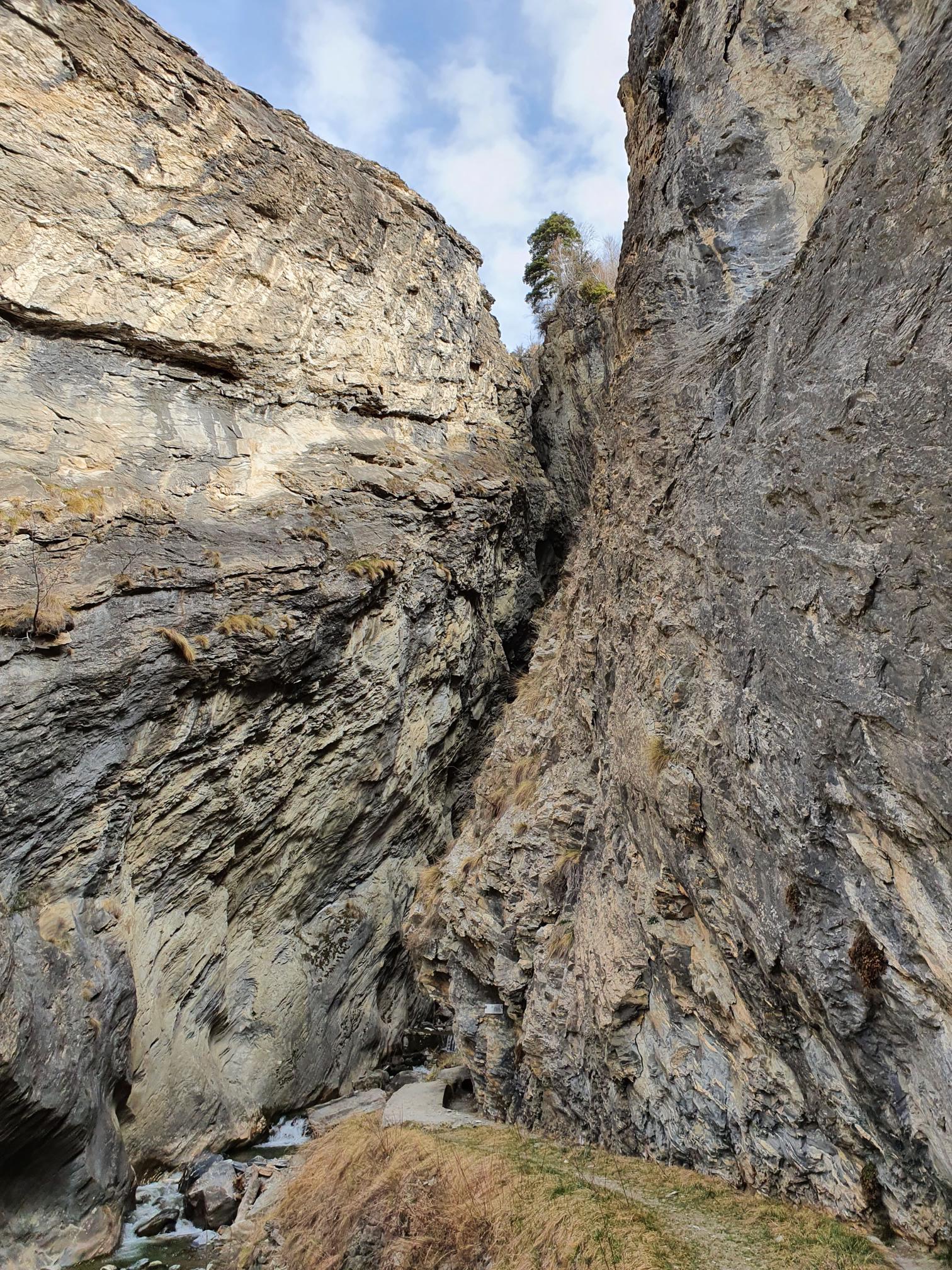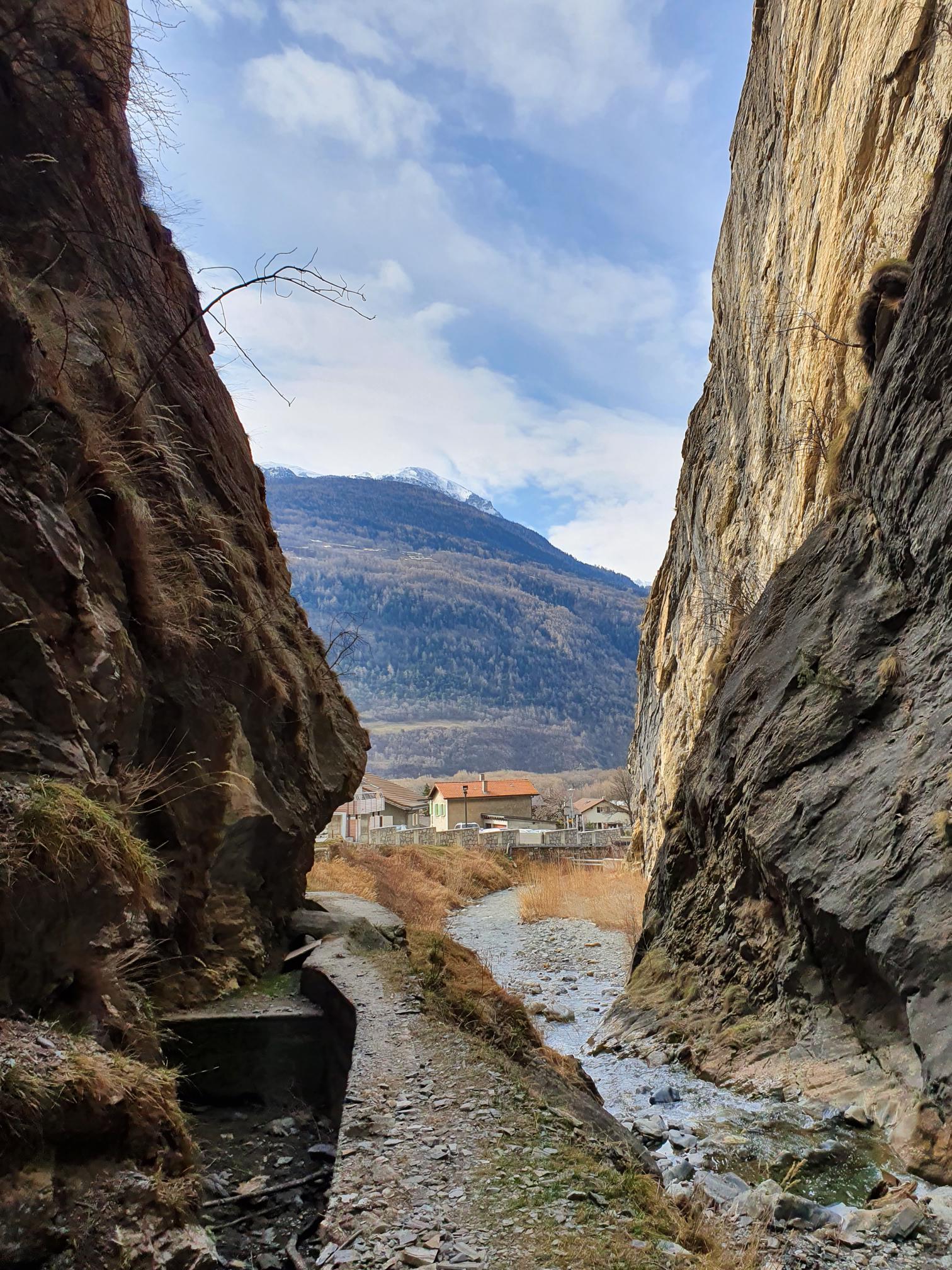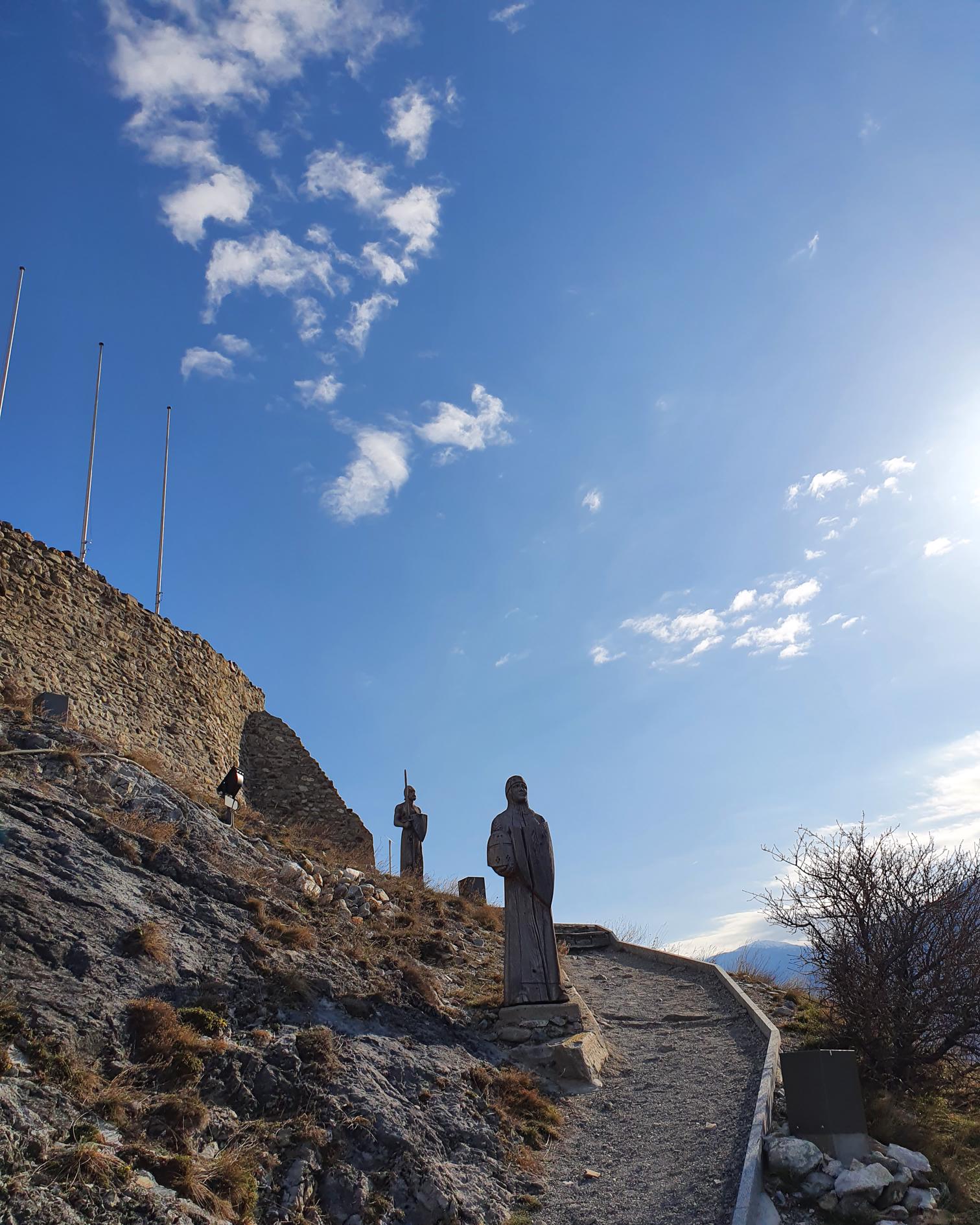The Lords of Turn ruled the area around Gesteln, whose name is derived from the local castle, until the second half of the 14th century. The barons are now depicted as wooden figures on the way to the castle. The castle must have been built before 1235, but the exact date is unclear. The owners, the de la Tour family, had been living in Valais since the 12th century. The family realized that they should not mess with the Upper Valaisians in 1384, when the castle was finally destroyed. This sealed the future language in this region and French was displaced as far as Sion.
Six hundred years after the castle was destroyed, the Pro Castellione Foundation began restoring the castle. The excavations were completed in 1993. The discovery of the old tiled stove, whose tiles were decorated with flowers, patterns, animals and people, was remarkable.
legend
In the three corridors of the Feschtiloch, which is located on the castle grounds, there are supposed to be three cauldrons full of money. Each cauldron is guarded by an animal. A poisonous snake, a toad and a lion each watch over one of these containers. The money can only be stolen on Christmas Eve. However, the needy person must give each animal a kiss. This is only possible during the transubstantiation of the Holy Mass. But to do this, you first have to find the cauldrons. So far, no one has been able to carry the containers away and they are probably still hidden deep in the cave.
Excursions and surroundings
During the last ice age, a cave was formed in the middle of the castle, and it is still possible to climb through it today. The rocky cleft is very narrow and steep, so the climber's footwear is put to the test.
Further down in the village, near the church, there is a climb up to a suspension bridge that leads over the Joli Gorge. This oppressive narrow passage from which the Jolibach stream flows into the valley is well worth seeing.
The village of Niedergesteln and the Jolital are UNESCO World Heritage sites and are home to numerous buildings from the twelfth and fourteenth centuries in typical Valais style.



